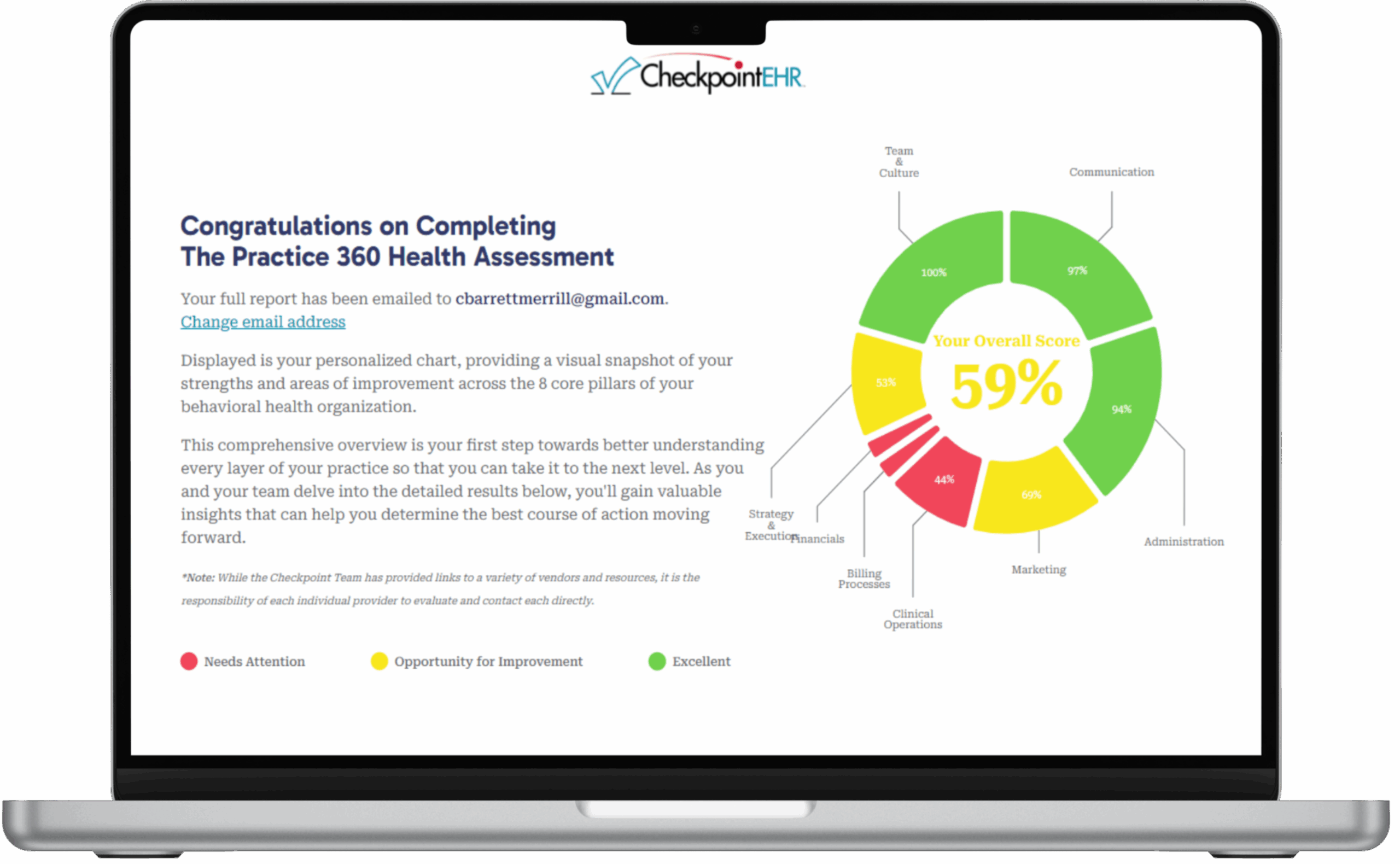How to Setup your Behavioral Health Practice to Accept Medicaid

Getting set up to accept Medicaid or a Managed Care Organization (MCO) as a payer for client sessions is crucial for behavioral health therapists. It opens doors to serve a broader population, particularly those who may not have access to other forms of insurance. The process can be complex and often involves meeting specific requirements set by each state. With careful planning and attention to detail, you can navigate it successfully. This guide will provide a step-by-step overview to help you get started.

1. Understand the Basics of Medicaid and MCOs
Medicaid is a federal and state program that provides health coverage to low-income individuals and families. Managed Care Organizations (MCOs) are private insurance companies that contract with Medicaid to manage the care of Medicaid beneficiaries. These organizations often have their own network of providers, and enrolling as a provider with an MCO can be a distinct process from enrolling directly with Medicaid.
Key Considerations:
- State-Specific Programs: Medicaid is administered by individual states within federal guidelines. This means that each state has its own rules and procedures for enrolling as a Medicaid provider.
- MCO Contracts: If you want to work with an MCO, you’ll need to understand the specific requirements and contract terms for each organization you plan to work with.
2. Determine Your Eligibility
Before applying, you must ensure that you meet the basic eligibility criteria to become a Medicaid provider. These criteria can vary slightly depending on your state, but typically include:
- Licensure: You must be a licensed behavioral health provider in your state. This can include psychologists, social workers, marriage and family therapists, and other licensed mental health professionals.
- Accreditation: Some states may require accreditation from recognized bodies such as the Council on Accreditation (COA) or The Joint Commission.
- Background Checks: Many states require providers to undergo criminal background checks and screenings against federal exclusion lists.
3. Research State-Specific Requirements
As Medicaid is state-administered, the application process and requirements can vary. Research your state’s Medicaid program to understand the specific steps you need to follow.
Where to Find Information:
- State Medicaid Website: Start with your state’s Medicaid website, which should have a section dedicated to provider enrollment.
- Provider Manuals: Many states publish provider manuals that outline the requirements and procedures for enrolling as a Medicaid provider.
- Professional Associations: State chapters of professional associations (like the American Psychological Association or the National Association of Social Workers) may offer resources or guidance.
4. Obtain a National Provider Identifier (NPI)
The National Provider Identifier (NPI) is a unique identification number for healthcare providers in the United States. You’ll need an NPI to bill Medicaid or MCOs.
How to Obtain an NPI:
- Visit the NPPES Website: Go to the National Plan and Provider Enumeration System (NPPES) website.
- Complete the Application: Fill out the application with your personal and professional information.
- Receive Your NPI: Once your application is processed, you’ll receive your NPI via email.
5. Enroll as a Medicaid Provider
Once you have your NPI, you can begin the process of enrolling as a Medicaid provider. The steps may vary by state, but generally, you’ll need to:
Application Process:
- Complete the Provider Enrollment Application: This can usually be done online through your state’s Medicaid website.
- Submit Required Documentation: This may include your license, proof of malpractice insurance, accreditation (if required), and other supporting documents.
- Undergo a Site Visit (if applicable): Some states require an on-site visit as part of the enrollment process, especially if you’re operating a private practice.
- Sign Provider Agreements: These agreements outline your obligations as a Medicaid provider, including billing practices and compliance with Medicaid regulations.
State-Specific Example:
- California: In California, behavioral health providers must enroll through the Department of Health Care Services (DHCS). Providers must complete the DHCS Provider Enrollment Application and undergo a background check, which includes fingerprinting.
- New York: In New York, providers enroll through the eMedNY system, and they must submit their application along with specific forms such as the Medicaid Provider Enrollment Agreement and Disclosure Statement.
6. Enroll with Managed Care Organizations (MCOs)
If you want to accept MCOs, you’ll need to enroll with each organization individually. The process is similar to enrolling with Medicaid, but there are some key differences.
Steps to Enroll with an MCO:
- Identify MCOs in Your Area: Research the MCOs that operate in your state and are contracted with Medicaid. Each MCO will have its own provider network.
- Complete the Application: Each MCO will have its own application process, which usually includes submitting your NPI, Medicaid provider number, and other relevant documentation.
- Negotiate Rates: MCOs often negotiate reimbursement rates with providers, so be prepared to discuss your rates and any special conditions.
- Sign Contracts: Once accepted, you’ll need to sign a contract that outlines the terms of your relationship with the MCO, including billing, documentation, and compliance requirements.
7. Set Up Your Billing and Documentation Systems
Once you’re enrolled as a Medicaid or MCO provider, you’ll need to ensure that your practice is set up to handle the specific billing and documentation requirements.
Billing:
- Medicaid Billing: Medicaid typically requires specific coding and documentation for reimbursement. Familiarize yourself with the billing codes for behavioral health services in your state.
- MCO Billing: Each MCO may have its own billing procedures, so it’s essential to understand the differences and set up your billing system accordingly.
- Electronic Health Record (EHR) Systems: Many providers use EHR systems to manage billing and documentation. Make sure your system is compatible with Medicaid and the MCOs you work with.
Documentation:
- Maintain Detailed Records: Medicaid and MCOs often have stringent documentation requirements. Ensure that your client records are complete, accurate, and up-to-date.
- Compliance Audits: Be prepared for audits from Medicaid or MCOs, which may review your records to ensure compliance with regulations.
8. Stay Informed and Up-to-Date
Medicaid and MCO regulations can change, so it’s important to stay informed about any updates that may affect your practice.
How to Stay Informed:
- Regularly Review Provider Manuals: Provider manuals are often updated with new information, so make it a habit to review them periodically.
- Attend Training and Webinars: Many states and MCOs offer training sessions or webinars to keep providers informed about changes in regulations and best practices.
- Join Professional Networks: Being part of professional networks or associations can help you stay connected with peers who may share updates or advice.
Common Challenges and How to Overcome Them
Enrolling as a Medicaid or MCO provider is not without its challenges. Here are some common obstacles and tips on how to overcome them:
- Lengthy Application Process: The application process can be time-consuming, and it may take several months to complete. To avoid delays, make sure you have all required documentation ready before you start.
- Complex Billing Requirements: Medicaid and MCO billing can be complex, particularly if you’re new to the system. Consider hiring a billing specialist or using a billing service that specializes in Medicaid and MCO billing.
- Varying Reimbursement Rates: Medicaid and MCOs often have lower reimbursement rates than private insurance. It’s essential to consider whether these rates are sustainable for your practice and if you can negotiate better terms with MCOs.
Final Thoughts
Accepting Medicaid and MCOs as a payer can significantly expand access to your services and help you serve a more diverse client base. While the process to get set up can be complex, especially with varying state-specific requirements, it’s a worthwhile endeavor for many behavioral health therapists. By following the steps outlined in this guide and staying informed about your state’s specific processes, you can navigate the system successfully and integrate Medicaid and MCOs into your practice.
Remember that the process doesn’t end once you’re enrolled; maintaining compliance and staying up-to-date with changes in regulations is an ongoing responsibility that will help ensure the sustainability of your practice and the quality of care you provide to your clients.
Up Next… Article #2 in our Medicaid blog series: Medicaid 101: What it is and it’s Role in Behavioral Health




